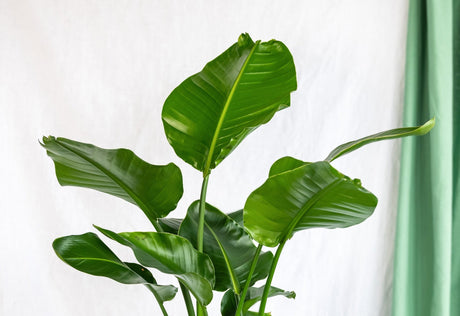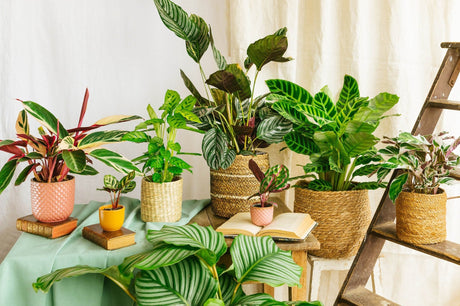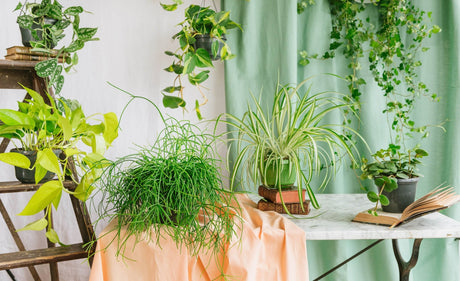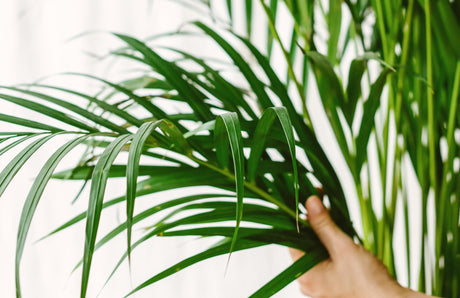The Syngonium, native to tropical regions of America, is distinguished by its elegant leaves that often feature interesting patterns and a variety of colors, ranging from green bright to pink pale. This plant is not only aesthetically appealing, but is also renowned for its ability to purify the air, making it a popular choice for indoor spaces.
There are several varieties of Syngonium:
- Syngonium Pink Neon
- Syngonium podophyllum Maria Red
- Syngonium Pink Splash
- Syngonium podophyllum Green Sunshine
1. Watering the Syngonium
The frequency of watering depends on factors such as the size of the pot, the temperature ambient and humidity. In general, during the months warm of growth (spring and summer), you may need to water your Syngonium once times per week. In autumn and winter, reduce frequency as the plant enters its dormant period.Tip: Insert your finger 2-3cm deep in its soil. If it's dry, it's time to water. If it is wet, you can wait a few days.
2. Watering techniques
Leaf Spray
Sygonium loves humidity. Regularly misting the leaves with clean water helps maintain humidity and prevent problems with dry air.Down Watering
Base watering involves adding water directly to the soil of the pot3. Syngonium Exhibition
Sygonium thrives in bright indirect light. Avoid direct sunlight, as this can scorch the delicate leaves.4. When should you repot the Syngonium?
The Syngonium should generally be repotted every 1 to 2 years, in spring or early summer. This is the period of growth active of the plant, which facilitates its adaptation to its new pot and its mixture of ground. The signs that your plant needs repotting:Root crowding
If you observe that the roots of the Syngonium have completely filled the pot and are starting to come out of the drainage holes, it is a sure sign that it is time to repot. Insufficient growing space can limit plant development.Slow growth
If your Syngonium is growing slower than before despite proper care in terms of light, watering and fertilizer, it may indicate that the plant has depleted the nutrients from its current soil and needs a larger space.Exhausted soil
If your Syngonium's soil mix is compact, drained, or no longer holds moisture effectively, it may be time to repot. Depleted soil can lead to poor overall plant health.Roots sticking out
If the roots of the Syngonium begin to protrude through the drainage holes in the pot or form a dense ball on the surface of the soil, this is an indicator that the plant needs new space to grow.Yellow or withered leaves
Yellow or wilting leaves can be a sign of root stress due to lack of space or depleted soil. If you've eliminated other issues like overwatering, consider repotting.5. What fertilizer should I use for my Syngonium?
A fertilizer specially formulated for indoor green plants is a great option for your Syngonium. Here are some tips for choosing and applying fertilizer optimally:Fertilizer Frequency
During the period of active growth, usually spring and summer, fertilize your Syngonium every 4 to 6 weeks. In fall and winter, when growth slows, reduce frequency to about once every 6-8 weeks.6. How do I multiply my Syngonium?
For multiply your Syngonium, you can use the method of cuttings in taking a healthy stems. Cut a section of stem approximately 5 to 10cm long, just below a node. Remove the bottom leaves to expose the nodes.Place the cutting in a substrate light well
7. Syngonium Diseases
Syngonium is generally a hardy plant and not very prone to disease, but like all plants it can be affected by certain problematic conditions. Here are some common illnesses and issues your Syngonium might face:Root rot
Root rot usually occurs due to excess moisture in the soil. The roots become soft, brownish and can break off easily.Grey mold
This fungal disease can appear as gray or brown spots on the leaves. It thrives in humid and poorly ventilated environments.Leaf spots
Leaf spots can be caused by various fungal or bacterial diseases. They appear as discolored spots on the leaves.Mealy bugs, aphids and mites
These pests can suck sap from Syngonium leaves, causing the leaves to wilt, yellow, and distort.Yellow leaves
Yellow leaves can be caused by overwatering, underwatering, low light, or nutrient deficiencies.8. Delivery and receipt of your plant
- Your plant is dry ? Bathe her for ten minutes.
- Your plantiswet ? Let the potting soil dry.
- Should I repot my






